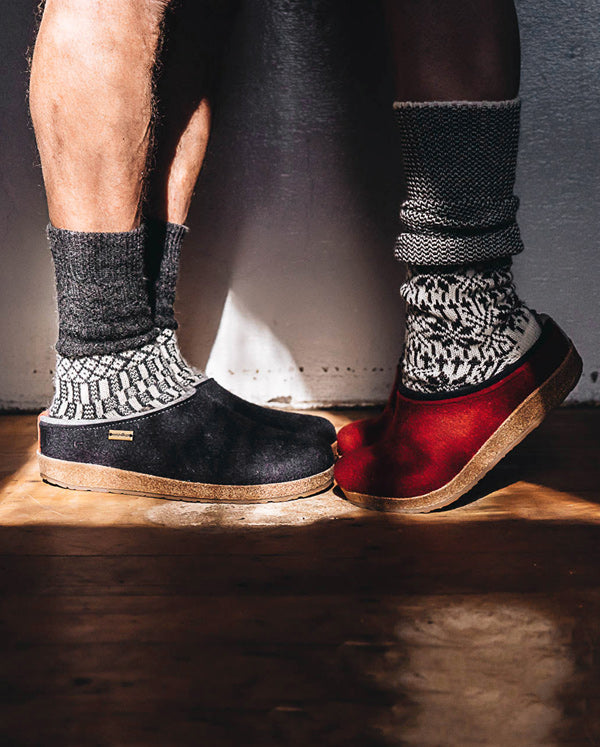Your Cart is Empty
Hirsch Socks are back! 🧶 UMIFORM🤍NEW IN🌱 DISANA nappies HUGE RESTOCK
FREE shipping Australia wide on orders over $250* Sign up to our Newsletter here
Menu
-
- NEW IN
- Baby/Kids
- Adults
- Wool Care
- Nappies
- reNEWool ♻️
- Brands
- Disana
- Engel
- Nature Baby
- As We Grow
- Kleine Schobbejak
- Bergstein Footwear
- Fairechild Rain Gear
- De Colores
- FUB Merino Knitwear
- Haflinger Slippers
- minimalisma
- Pickapooh
- my alpaca Copenhagen
- Padraig Cottage
- Cosilana
- Hirsch Natur Socks
- Lana Bambini Socks
- UMIFORM
- Kaiser Baby
- Ruskovilla
- Cobbled Together
- Woollykins
- The Laundress Wool Care
- Redecker Cedar Wood Wool Care
- Pure Pure Sun Hats
- Fog Linen Work
- Collégien
- Fibre
- SALE
- Good Gifts
-
- 0456 389 641
- Login
-
Australia (AUD $)
Hirsch Socks are back! 🧶 UMIFORM🤍NEW IN🌱 DISANA nappies HUGE RESTOCK
FREE shipping Australia wide on orders over $250* Sign up to our Newsletter here
Baby/Kids
Adults
Wool Care
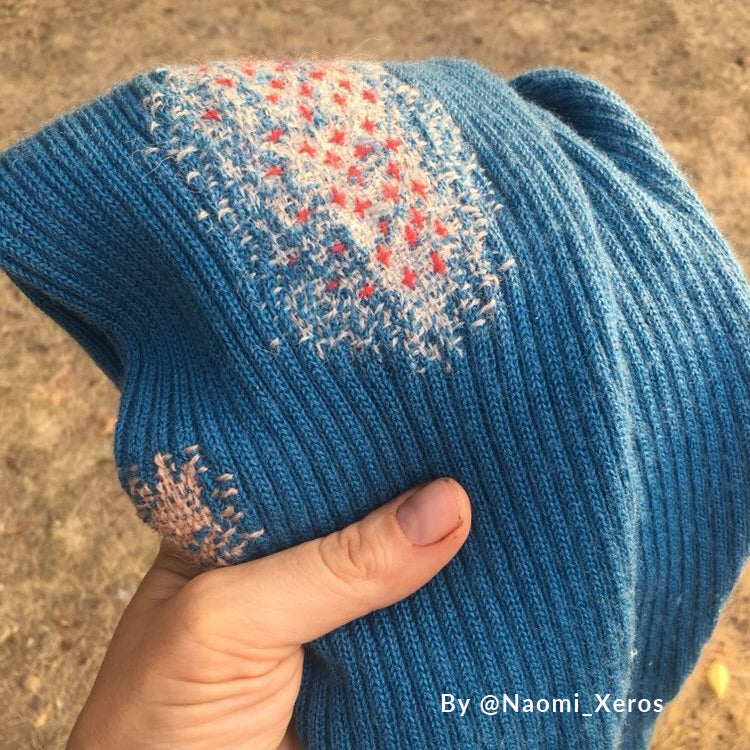
Loved clothes last. We want to help you get the best from your Woollykins for years to come.
Nappies
We love Disana's cloth nappy system. 100% organic and plastic-free for natural, toxic-free nappying. We used the Disana system for all three of our babies.
We love Disana's cloth nappy system. 100% organic and plastic-free for natural, toxic-free nappying. We used the Disana system for all three of our babies.
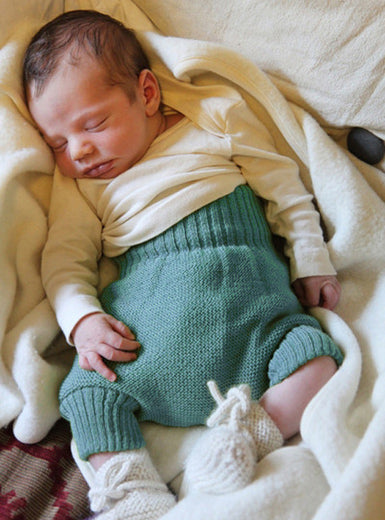


Natural Fibres
Why wool and natural fibres feel so good for your children.
The importance of wearing natural fibres
Our skin is our largest organ and via its two-way pores it can absorb into the bloodstream any harmful chemicals it comes in contact with. Therefore it is very important to consider the clothing we wear day and night, especially for babies and children, whose dermal layers are not yet fully formed. For proper growth and development, the touch and warmth babies encounter from birth should be as nurturing as skin-to-skin contact. That's why nature's unprocessed protein fibres like wool and silk, which are closest in structure and behaviour to human skin, have been the first choice for babies throughout the ages.
In this chemical and intensively farmed world we live in today, choosing Organic and pure natural fibres for the clothing and nappies they spend most of their time in is of upmost importance. Here are Woollykins we've hunted down what we believe is the finest, low-impact, minimally processed, ethically sourced, organic clothing for you and your children. Our favourite brands Disana, Engel and Cosilana are established German brands that have been at the forefront of Natural organic textiles for the past 40 years. These brands carry the IVN Best & GOTS labels meaning that all aspects of the materials and manufacture of the garments meet the highest standard in organic and ethically made textiles that cannot be subject to cruel mulesing practices or any chemical treatments like Superwash or chemical moth deterrents. Read on for the low down on our favourite natural fibres and why they perform so well for clothing the human body, starting with our very favourite.
Get the low down on important Eco-Textile Certifications here.
About Merino Wool
 Wool is comfortable, healthful and healing. If you think of wool as being heavy and itchy then think again! Merino wool is known to be the finest wool on the market. It has a high warmth to weight ratio making the garments light and an excellent body temperature regulator. However not all merino wool is equal in our experience and ethical sourcing and processing of the wool needs to be taken into consideration. Our wool products are always mulesing-free and we avoid any Superwash treated wool products. We know that "Superwash" chemical processing is not GOTS certifiable so if in doubt, always look for GOTS certified organic merino wool if you want to avoid "Superwash" processed wool.
Wool is comfortable, healthful and healing. If you think of wool as being heavy and itchy then think again! Merino wool is known to be the finest wool on the market. It has a high warmth to weight ratio making the garments light and an excellent body temperature regulator. However not all merino wool is equal in our experience and ethical sourcing and processing of the wool needs to be taken into consideration. Our wool products are always mulesing-free and we avoid any Superwash treated wool products. We know that "Superwash" chemical processing is not GOTS certifiable so if in doubt, always look for GOTS certified organic merino wool if you want to avoid "Superwash" processed wool.
Real Merino Wool (i.e. non-Superwash):
- Allows the skin to breathe
- Repels water
- Responds to changes in environmental temperature helping to regulate the body's temperature
- Wicks moisture away from the skin keeping it dry and clean
- Is self cleaning - making it so practical for children!
- If not highly processed, contains lanolin which has antibacterial properties
-
When it still contains lanolin - doesn't hold odours, especially urine - great for nappies and undies
Pure wool can absorb up to a third of its own weight in moisture without feeling damp. Thanks to its lanolin content, the fibre also offers protection from external wetness, with pearls of water forming on its surface. Wool is not electro statically charged, and so its attraction to dirt or odour is minimal. The scales on the surface of the fibres actually repel dirt which is why you find wool often cleans itself. Woollen clothing therefore seldom needs to be washed and usually simply airing in an oxygen rich place will suffice - outdoors in a breeze or in a steamy shower room.
"The unique structure of wool means that the exterior of the fibre is hydrophobic, which tends to repel water while the interior of the fibre is hygroscopic, which attracts water. This means that the fibre can absorb up to a third of its weight in moisture vapour without feeling wet or losing warmth, which is one of the attributes that gives wool its comfort factor." Source
The science behind why Merino wool performs so well for particular products like Socks and Undies is fascinating. Wool is a protein fibre, and works in harmony with the human body due to its similarity to human hair - although it is much much finer of course. When the merino wool comes in contact with sweat the fibre surface turns to acidic pH-values hampering the development of bacteria and fungi. This environment causes the skin to tighten, avoiding blisters even on long hikes. For that reason when wearing wool socks during strenuous activity, you should wear woollen socks only for one day, and then air it for two days. It is sufficient to wash socks worn/aired like this every 2 months. Most washing detergents are alkaline and neutralize the above mentioned effect so you should only wash pure wool socks with PH neutral, enzyme-free gentle wool detergents or shampoo, and if possible by hand.
Caring for Wool Garments
Wool is an excellent investment for clothing and when washing is necessary here are our tips - for more extensive instructions learn how to wash wool properly here:
- Use a mild wool shampoo (we recommend these)
- Use lukewarm water or maximum temperature of 30°C and don't alter water temperature in the process to avoid shrinking/felting.
- Hand wash (immerse in a sink of water with wool wash, gently massage underwater for a minute or two, squeeze out under gently running tap to rinse, squeeze excess water or roll in a towel, dry flat in shade)
- Every couple of months re-lanolise your garment to add back lanolin that has been removed by washing (dissolve lanolin conditioner in a little hot water in a sink, add lukewarm water, immerse garment, swishing about gently, squeeze out excess water and dry
- To avoid felting wool should not be soaked, rubbed, wrung out or brushed wet. Water temperature needs to be constant to avoid shocking and felting the fibres. Wool should never be dried on a heater or tumble dryer.
ABOUT MENDING. Darning is back, thank goodness! If you haven't tried darning, once you do you'll be actively seeking out garments with holes to darn. Mending is a highly satisfying thing in today's age of disposable fast fashion. We've put together Mending Kits and also many great tips and inspiration in our Mending Gallery. Check our our Mending Resources page for instructions on darning.
SHOP all knitted organic merino wool
SHOP all Boiled and Felted merino wool
SHOP all fine knit 100% merino wool
Peruvian Baby Alpaca

Baby alpaca fibre is incredibly soft and lightweight. It is known for providing super insulation due to the microscopic air pockets in the fibres, so it keeps you warm in the winter and cool in the summer. The same air pockets make the fibres feel as light as air and yet the fibre is very strong, meaning it lasts longer than most other similar fibres like wool, cashmere and silk. It's more resistant to shrinking and won't mat or pill as easily. Alpaca fibre tends to drop over time as it doesn't have the elasticity that wool does which means the garments will often grow in length which can be quite useful and feels as if the garment is growing with you.
Peruvian baby alpaca fibre comes from animals that graze the Andes naturally as they have done for many generations and are managed by small holders at altitudes of 3000-5000m. At those heights food cannot be grown so alpaca farming provides an income to families living in these extreme conditions. Since the area is not cultivated or chemically fertilised or the animal's diet supplemented with feed, they graze on organic mountain pasture although Organic Certification is technically not possible in these conditions. The animals are sheared by hand once a year by skilful small holders.
SHOP all 100% baby alpaca knitwear
Organic Silk – Smooth enough for the Emperors

One of our suppliers Ruskovilla, a Finnish natural clothing brand, were the first to introduce clothes made out of certified organic silk to the Nordic market. The silk they use comes from Central China from an organic silk farm located in the Sichuan province. For millennia the mountain slopes have been used to manufacture silk according to the age-old traditions of diverse cultivation culture and handicraft-intensive labor.
Silk is produced by mulberry leaf-eating bombyx mori.Organic Silk is created without the use of any chemicals or treatments using insecticides, pesticides or synthetic fertilisers. Compared to regular mass production silk organic silk differs mainly due to its high quality: after eating the organically farmed mulberry leaves a single caterpillar can produce up to 1500 meters of uninterrupted and high-quality filament silk. Out of this filament silk Ruskovilla makes its organic silk clothing.
Silks' light and breathable protein fibres are similar to human skin and therefore it feels extremely pleasant to wear. Due to the smooth structure it is well-suited for people with allergies or sensitive skin who can’t wear other materials. Silk also evens out temperature differences and can absorb moisture without feeling wet.
Organic silk production is handicraft-intensive and includes many steps. The bombyx mori caterpillars spin a cocoon around them out of thin silk thread. The cocoons are then collected by hand, brushed to remove the fragmented outer layer and after that the up to 1,5 km long uninterrupted silk thread is reeled. According to the organic manufacturing principles also other plants besides mulberry trees are grown in crop rotation around the farm, and the farm workers are taken care of so that they have a safe, equal and just working environment.
Raw Burette Silk

Burette silk is the waste of the regular silk production. But waste with a very special benefit. The silk comes from the cocoon of the silkworm after the metamorphosis is complete and the moth has pierced the cocoon to exit.
The silk worm secretes antimicrobials in the inner and outer layers of its cocoon to protect against disease and mould. These inner and outer layers are used for Burette silk garments and are highly prized for their healing properties because of these antimicrobials which help to heal the skin when it gets irritated. The healing and anti-inflammatory properties of these antimicrobial materials is highly effective on human skin. Only mulberry silkworms add these antimicrobials into their silk. Because the silk worm breaks the cocoon to exit the fibres are not as valuable to the silk market because the single thread cannot be reeled in one long thread but is spun instead, but the antimicrobial benefits make this fibre especially suitable for a child's sensitive skin.
Silk also feels pleasantly smooth and cool to wear. Raw Silk can absorb up to 30% of its own weight in fluid without feeling damp.
Burette Silk is:
- luxurious and cool to touch
- hypoallergenic
- very lightweight
- breathable
- warm with superior insulating properties
- naturally strong and durable
Disana's Raw Silk Nappy Liner is very effective if your baby is susceptible to nappy rash. Placed directly on baby‘s skin, the healing properties of raw silk work quickly and any redness is soon cleared up without any use of powder or cream. Silk is sensitive to high temperatures and will shrink if washed in hot water. Silk articles should be treated with special care.
Care instructions
- Hand wash or delicate machine wash max 30° C
- Do not bleach
- Do not tumble dry
- Iron damp at about 150° C
- Do not dry-clean
Hemp

Hemp is considered to be one of the most sustainable textiles available and a great alternative to cotton. We need to stop buying conventionally grown cotton as hemp performs better for the environment and for people. Hemp uses half the water and land to grow, is three times as strong, needs no pesticides and due to fast growth weeds are suppressed meaning no herbicides are needed. Importantly for the climate and the health of all plant and animal species, Hemp also sequesters carbon from the atmosphere with 1 tonne of hemp fibres removing 1.62 tonnes of CO2 making it Carbon Negative, and it returns 60-70% of the nutrients back into the soil. Hemp also improves the soil by adding carbon back into the soil in a process called biosequestration. It's 100% biodegradable and recyclable and feels beautiful against the skin. It's a wonder fibre for the health of the planet.
The Story of Hemp: Hemp almost disappeared in Europe and Northern America in the 1930’s, largely due to the big chemical companies like Dupont pushing anti drug legislation in an effort to shut down the hemp industry and replace natural fibres with their new synthetic fibres like nylon - which has led to much destruction to the planet and an ongoing issue with micro-plastics. The fact that the ‘industrial’ hemp that is used in textile applications contains very little of the psychoactive component THC seems lost on the lobbyists. Because hemp is now widely appreciated as a sustainable fibre, it is making a slow come back in Europe. One of the problems, like in many ancient craft based industries is that, together with the machines used in the different stages of the textile making process, much knowledge has disappeared.
Hemp yarns and fabrics are perfect for clothing families today. The fibre has specific properties which distinguish it from other materials and make it unique.
Hemp doesn’t trap much air and thus has relatively poor insulation properties. In this it resembles linen: hemp fabrics feel fresh and cool, a distinct advantage for summer clothing. Like wool, hemp is highly absorbent. It takes up water rapidly and also releases it quickly. On hot days this helps in regulating the microclimate between body and clothing. Cloth nappy users will know first-hand the absorbent benefits of hemp.
We would love to see the hemp industry grow and thrive across many countries to reestablish these industries and spread the use of hemp in fashion and industry. We have sourced a combination of mostly European hemp with some Chinese grown hemp blends.
Info sources: Ecological Textiles, Holland; Sunstrands Sustainable Materials website.
Linen

Flax Linen can be grown and cultivated with far less water and chemicals than its counterpart cotton. Linen is naturally stain resistant, does not pill, and is moth repellent. It is easy to wash and is a very strong fibre making it great for kids clothing. Like wool it has anti-bacterial, anti-fungal, hypo-allergenic and thermoregulating properties and it can absorb up 20% moisture before feeling damp. Flax is a strong plant best grown in northern Europe. It needs little or no fertilisers and due to the local climate little additional irrigation than the usual rainfall. It doesn’t really require pesticides either and it can grow in poor quality soil which can improve the soil quality. The Advisory Commission Report to the European Parliament stated that flax cultivation has positive effects on eco-system diversity as it allows for an “environmental pause”. One hectare of flax can retain 3.7 tonnes of CO2. Every part of the plant is used, what isn’t used to produce linen can be used to make linseed oil, paper, cattle feed or even soap.
Linen is therefore almost naturally organic. It is completely biodegradable, recyclable and due to its natural absorbency, it requires less dye than cotton. Linen therefore scores high on the ecological chart.
Organic Cotton

At Woollykins we sell a limited range of organic cotton by choice. Some products are particularly suited to this fibre like cloth nappies and some baby essentials like bibs and towels, etc. We believe the regenerative and less intensive fibres like those mentioned above have more benefits and ultimately last longer. However cotton has its place and when used organic is best for the many reasons mentioned below.
Although conventionally grown cotton is a natural fibre, its cultivation is problematic and involves high usage of water and agricultural chemicals like pesticides and herbicides. The use of organic cotton ensures that soil fertility and biodiversity is enhanced due to diversified cultivation and the non-use of GMOs. As a consequence, the health of the farmers is improved and their risk of being effected by hazardous chemicals minimised. Additionally water is not polluted by chemicals and therefore aquatic life is maintained and unharmed by the cotton production. The used water is recycled and dyestuff is removed so unnecessary pollution is avoided. Since skin can 'breathe' and absorb what is placed on the body, the natural purity of organic cotton from farming and processing greatly reduces the impact of the harmful chemicals being exposed to the child's skin.
Cotton:
- can absorb about 20% of its own weight in moisture without feeling wet
- is pleasantly soft to wear
- is permeable to air and actively breathes
- is highly resistant to friction and tearing
- tolerates high temperatures and can easily be washed at over 150°C
In the Disana Nappy Set, organic cotton is used whenever high fluid absorbency is required - namely in nappies and liners. Once absorbed, the fluid is quickly distributed over the whole fabric. A knitted organic cotton nappy with a weight of 85g can therefore absorb and contain up to 100ml of fluid. Thanks to its chemical composition as a carbohydrate fibre, cotton is resistant to heat, mechanical pressure and many chemicals. It can therefore easily be machine washed at 95°C. A hot iron will increase the volume of the cotton and leave it feeling softer and fluffier.
Care instructions for organic cotton nappies
- Machine wash at up to 60°
- Do not bleach
- Gentle tumble dry or dry in sun to bleach and remove stains
- Do not dry-clean
SHOP all organic cotton clothing
Subscribe
Sign up to get the latest on sales, new releases and more …
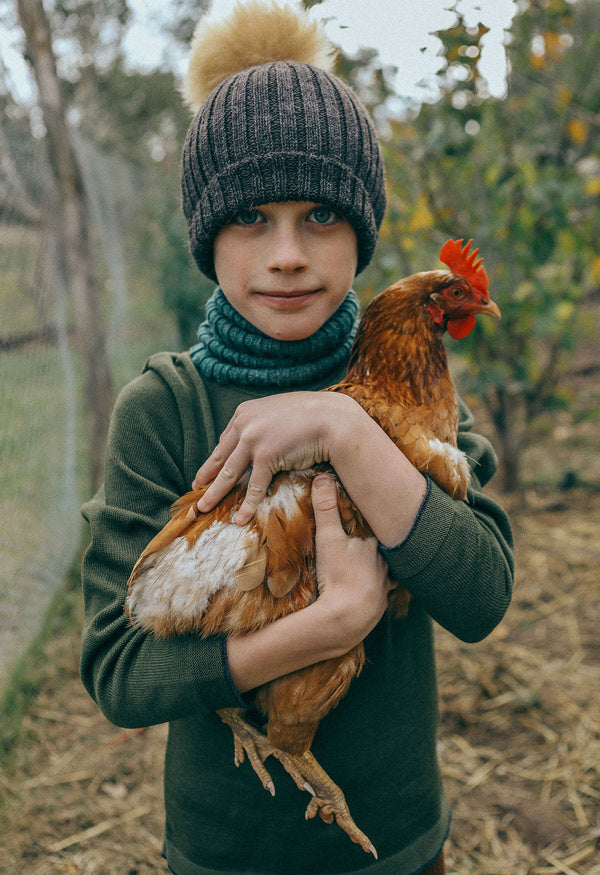
Join Us Wool Lovers!
Subscribe to our newsletter for early access to pre-orders and sales, wool care tips and new launches.
Our popular pieces come in and out regularly, use the Notify Me feature on Sold Out products to find out as soon as a piece is available again.

